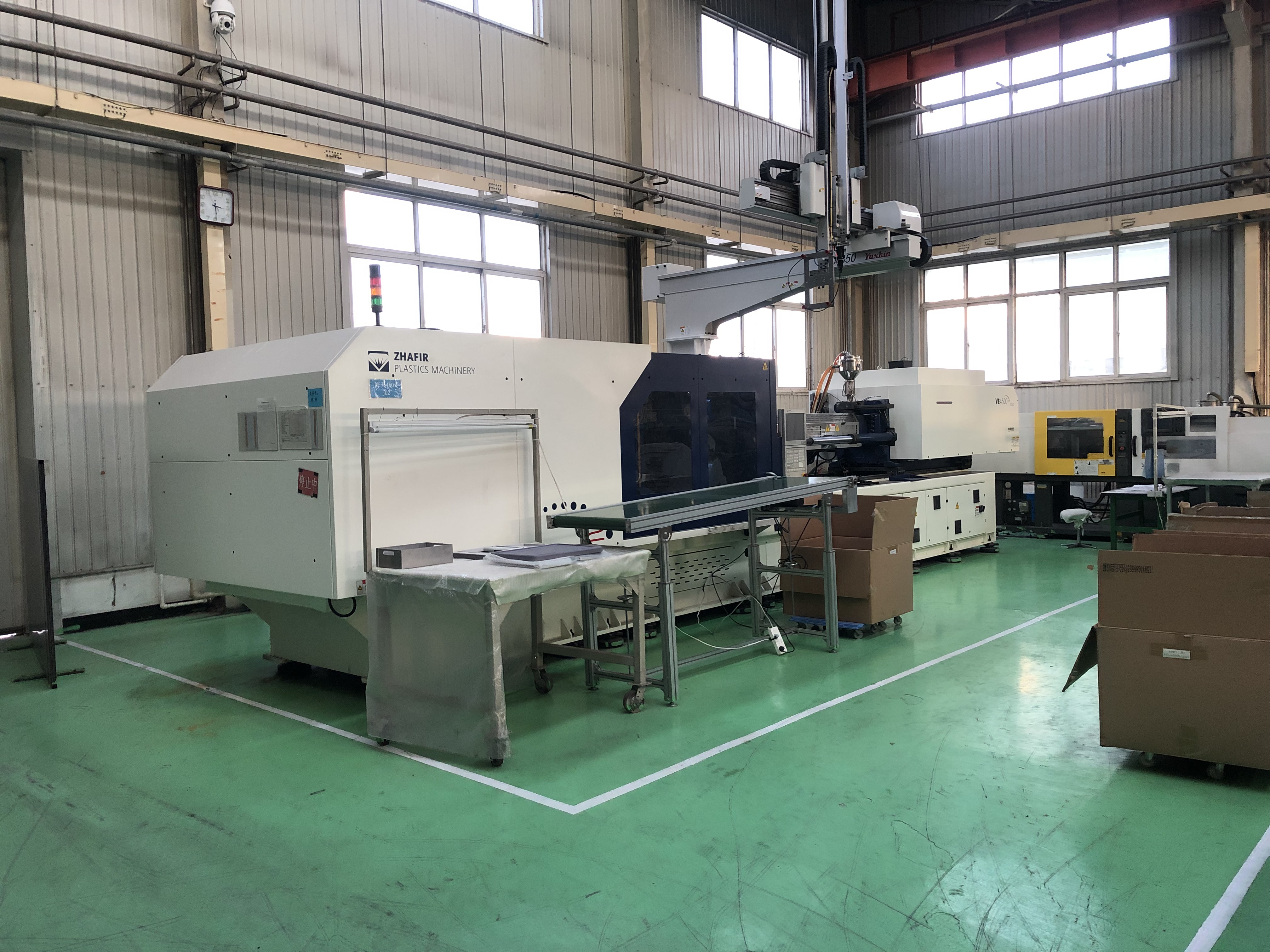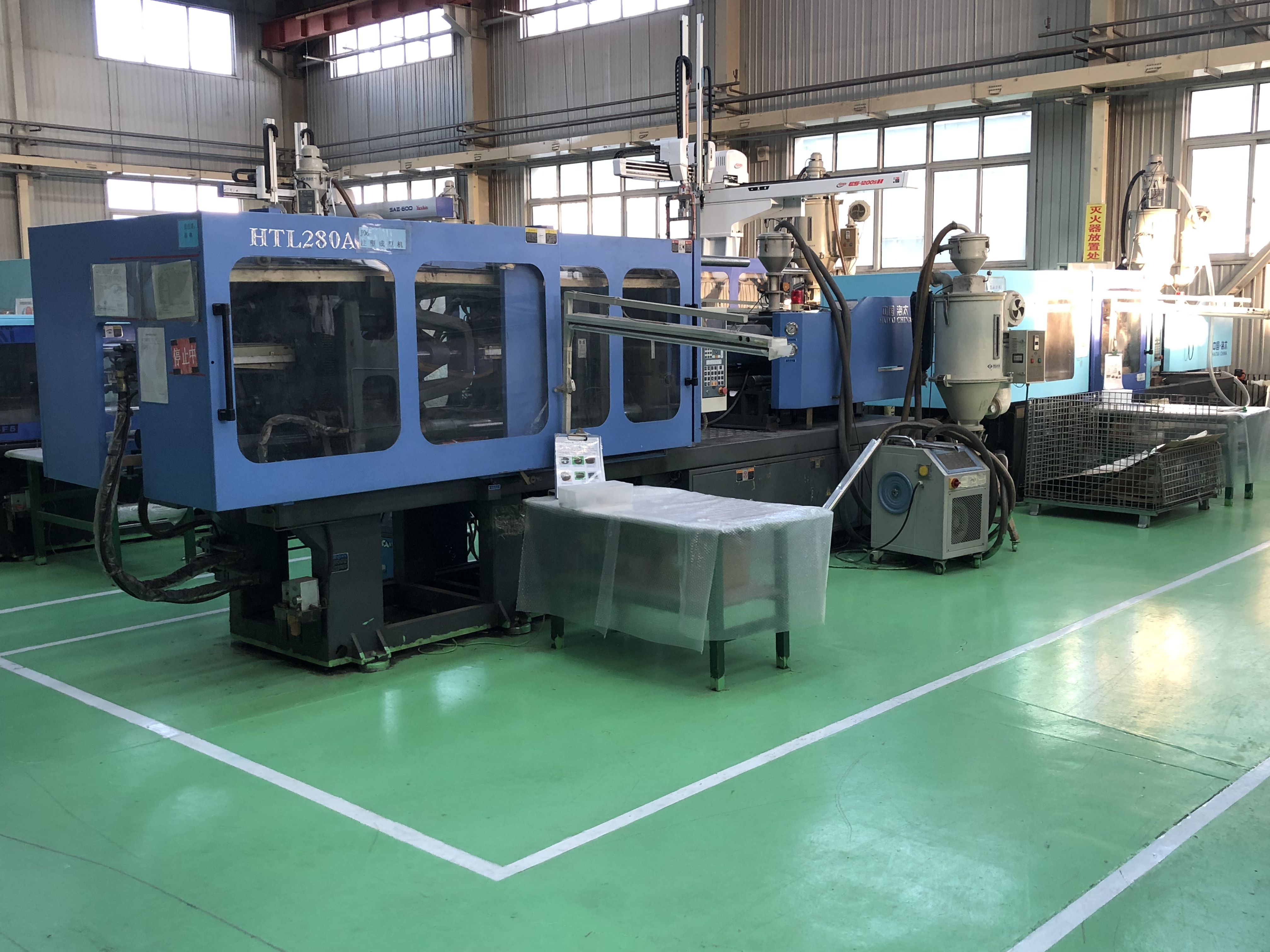Injection Device
The injection device is a device that makes the resin material melted by heat and injected into the mold. As shown in the figure, the resin is squeezed into the barrel from the material head, and the melt is transported to the front end of the barrel by the rotation of the screw. In that process, the resin material in the barrel is heated by heating under the action of the heater, and the resin becomes molten under the action of the shear stress of the screw, and the molten resin corresponding to the molded product, the main flow channel and the branch channel is retained. At the front end of the barrel (called metering), the continuous forward movement of the screw injects the material into the mold cavity. When the molten resin flows in the mold, the moving speed (injection speed) of the screw must be controlled, and the pressure (holding pressure) is used to control after the resin fills the mold cavity. When the screw position and the injection pressure reach a certain value, we can switch the speed control to pressure control.
Mold Maintenance
1. The processing enterprise should first equip each pair of molds with a resume card to record and count its use, care (lubrication, cleaning, rust prevention) and damage in detail. Based on this, it can find out which parts and components have been damaged and the degree of wear. Provide information on discovering and solving problems, as well as the molding process parameters of the mold, and the materials used in the product to shorten the trial run time of the mold and improve production efficiency.
2. The processing company should test the various properties of the mold under the normal operation of the injection molding machine and the mold, and measure the size of the final molded plastic part. Through this information, the current state of the mold can be determined, and the cavity and core can be found. , Cooling system and parting surface, etc., according to the information provided by the plastic parts, the damage state of the mold and the repair measures can be judged.
3. Focus on tracking and testing of several important parts of the mold: the ejector and guide components are used to ensure the opening and closing movement of the mold and the ejection of the plastic part. If any part of the mold is stuck due to damage, it will cause the production to stop. Always keep the mold thimble and guide post lubricated (the most suitable lubricant should be selected), and regularly check whether the thimble, guide post, etc. are deformed and surface damage. Once found, replace it in time; after completing a production cycle, the mold should be The working surface, moving and guiding parts are coated with professional anti-rust oil, and special attention should be paid to the protection of the elastic strength of the bearing parts of the gear, rack mold and the spring mold to ensure that they are always in the best working condition; Over time, the cooling channel is prone to deposit scale, rust, silt, and algae, which reduces the cross-section of the cooling channel and narrows the cooling channel, which greatly reduces the heat exchange rate between the coolant and the mold, and increases the production cost of the enterprise.


Therefore, the convection channel The cleaning of the hot runner mold should be paid attention to; for the hot runner mold, the maintenance of the heating and control system is helpful to prevent the occurrence of production failures, so it is particularly important. Therefore, after each production cycle, the band heaters, rod heaters, heating probes and thermocouples on the mold should be measured with an ohmmeter. If they are damaged, they should be replaced in time and checked with the mold history. Compare and keep records so that problems can be discovered in time and countermeasures can be taken.
4. Pay attention to the surface maintenance of the mold. It directly affects the surface quality of the product. The focus is on preventing rust. Therefore, it is particularly important to choose a suitable, high-quality, and professional anti-rust oil. After the mold completes the production task, different methods should be used to carefully remove the residual injection molding according to different injection molding. Copper rods, copper wires and professional mold cleaning agents can be used to remove the residual injection molding and other deposits in the mold, and then air dry. It is forbidden to clean up hard objects such as iron wires and steel bars to avoid scratching the surface. If there are rust spots caused by corrosive injection molding, use a grinder to grind and polish, and spray professional anti-rust oil, and then store the mold in a dry, cool, and dust-free place.

Post time: Oct-09-2021
